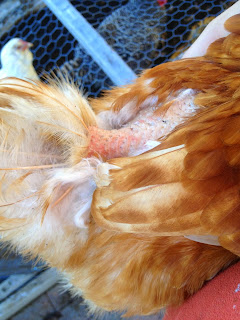A Taste of Honey

Last weekend when we checked the beehive, we saw that one of the combs was stuck to the bottom of the hive. We're thinking it must have fallen and then the bees reconnected it to the bar, but we had to remove it to keep them building comb in good, straight lines. So we cut it off of the box and decided to get a closer look once we closed up the hive: The part that Kirk is cutting off is actually the bottom of the comb. The solid yellow around the side and bottom (or shorter) edge is capped brood: cells that have bee larvae inside. Sorry, bees. Here's one hatching. Can you see her little eyes looking straight up at you? (She's dead center in the photo.) To the left is more capped brood; to the right is uncapped honey, nectar, and bee bread . Kirk cut off the brood sections because we are just not into eating bee larvae (yet). Fascinating cross section makes for an awesome biology project, though: In each cell you can see a semi-formed baby bee. T...








